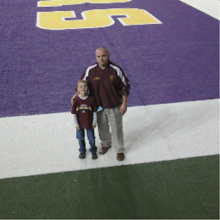Teaching Computers to Detect Emotions
My colleague Debra Viadero has a story up on edweek.org about improving tutoring by paying attention to students' emotions, which is completely normal--except that the tutors are actually computers.
Apparently, there are several research projects around the country that aim to create computerized tutors that can respond to students' emotions, some of which are currently being used in schools today. The systems receive feedback from wristbands that students wear, as well as sensors embedded on the computer, the students' chair, and the computer mouse. The systems can also detect emotion through a video camera that records the student's face. Through the feedback they receive, the computerized tutors empathize with students by mirroring their emotions and giving an appropriate response. For example, if a student is frustrated by a math problem, the computerized tutor will also express frustration and then say, "Let's read again what the problem is asking."
However, the research on whether this kind of tutoring is any more effective than traditional computerized tutoring systems is thin, although early results from small-scale experiments are promising, says the article.
Although this research almost reads like a sci-fi novel, it has already become a reality for some students, and I imagine it will continue to spread as the technology improves and the research becomes more robust. Still, as many folks in the article pointed out, even a computerized tutor designed to read emotions doesn't compare to a real, live teacher who can respond to the subtlest of emotions.
